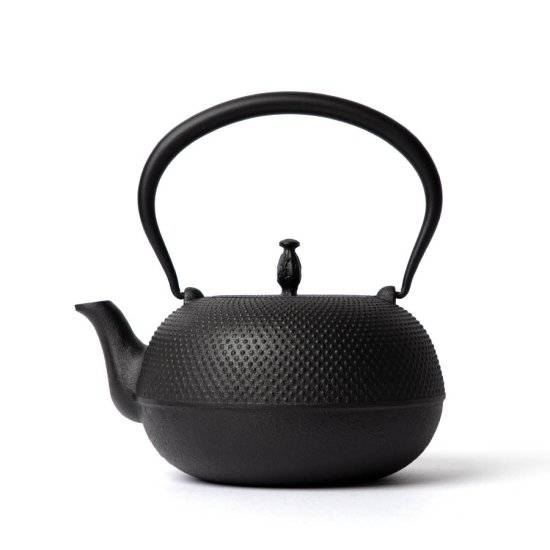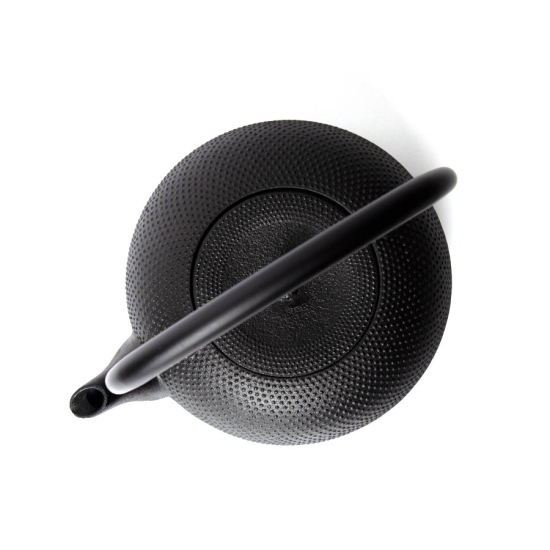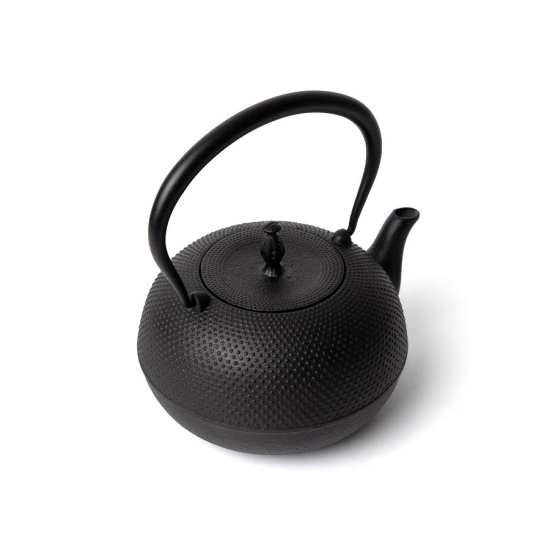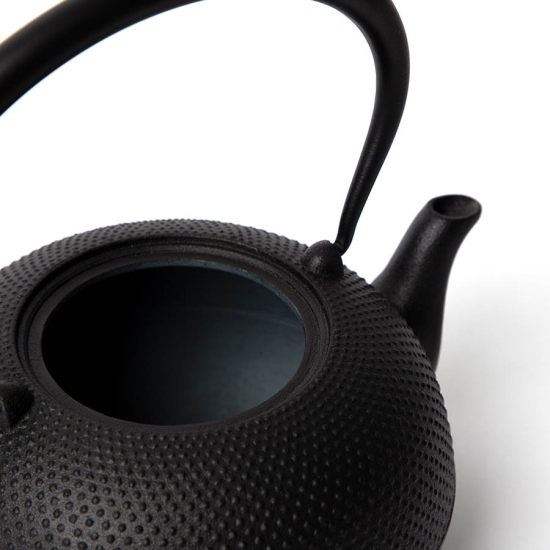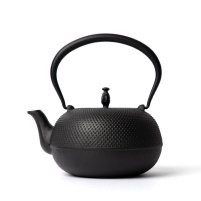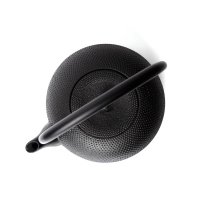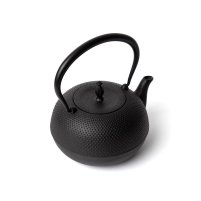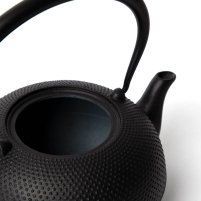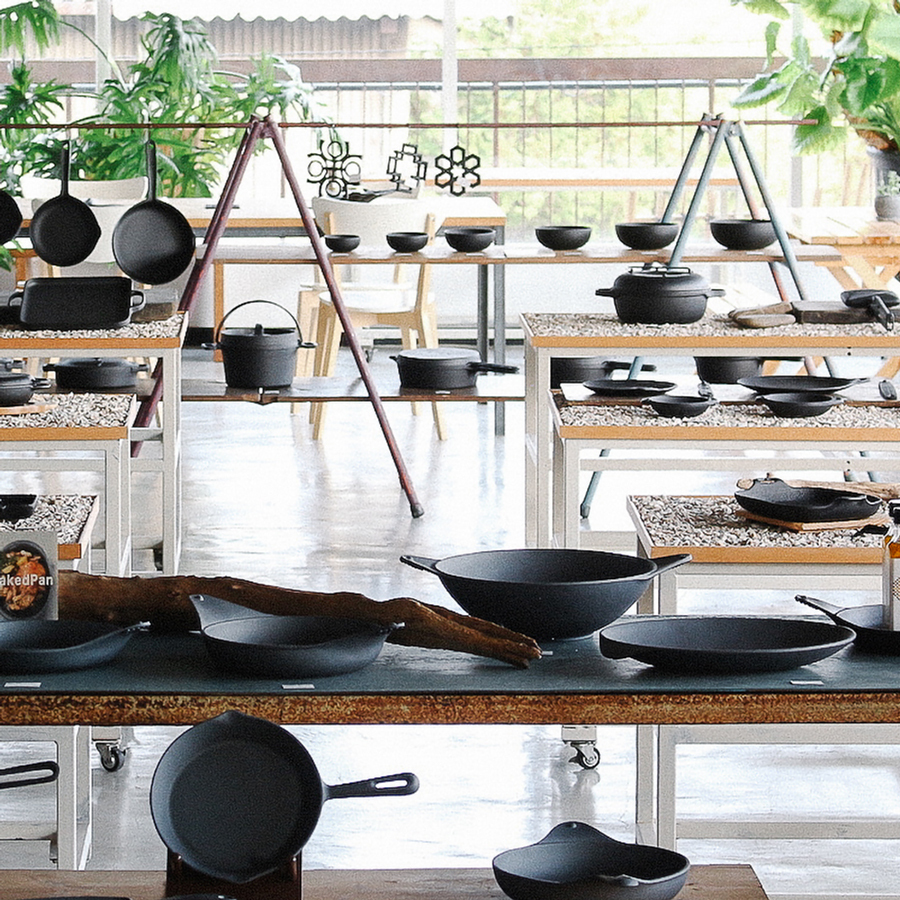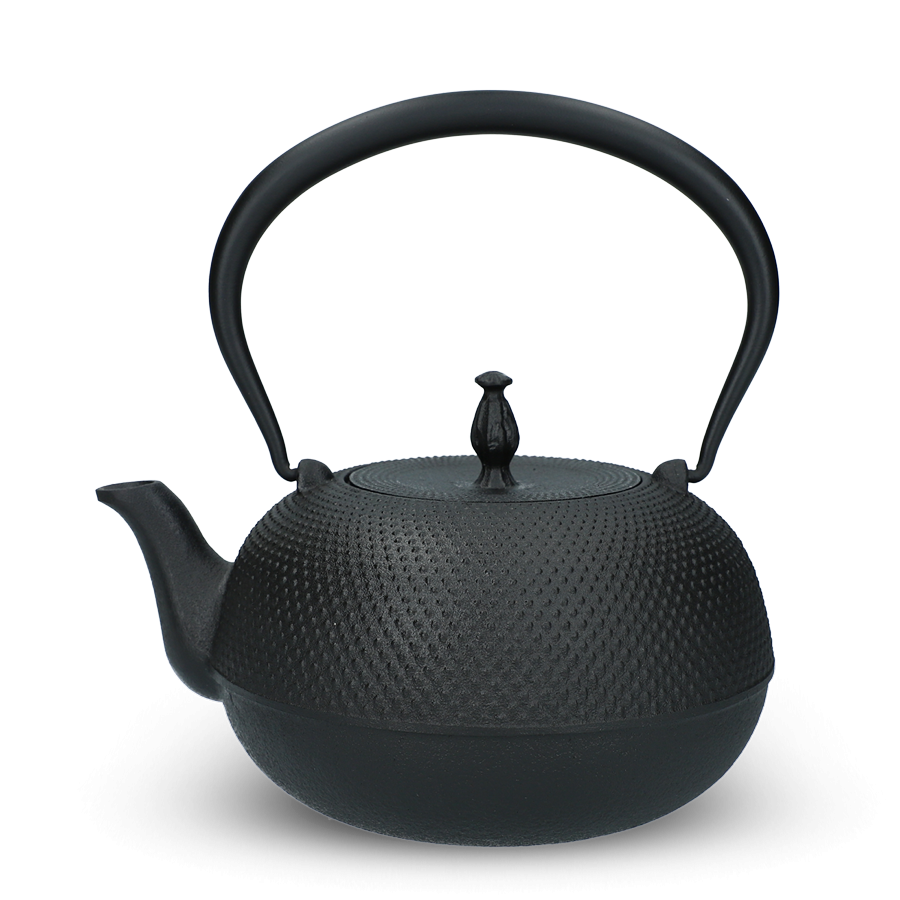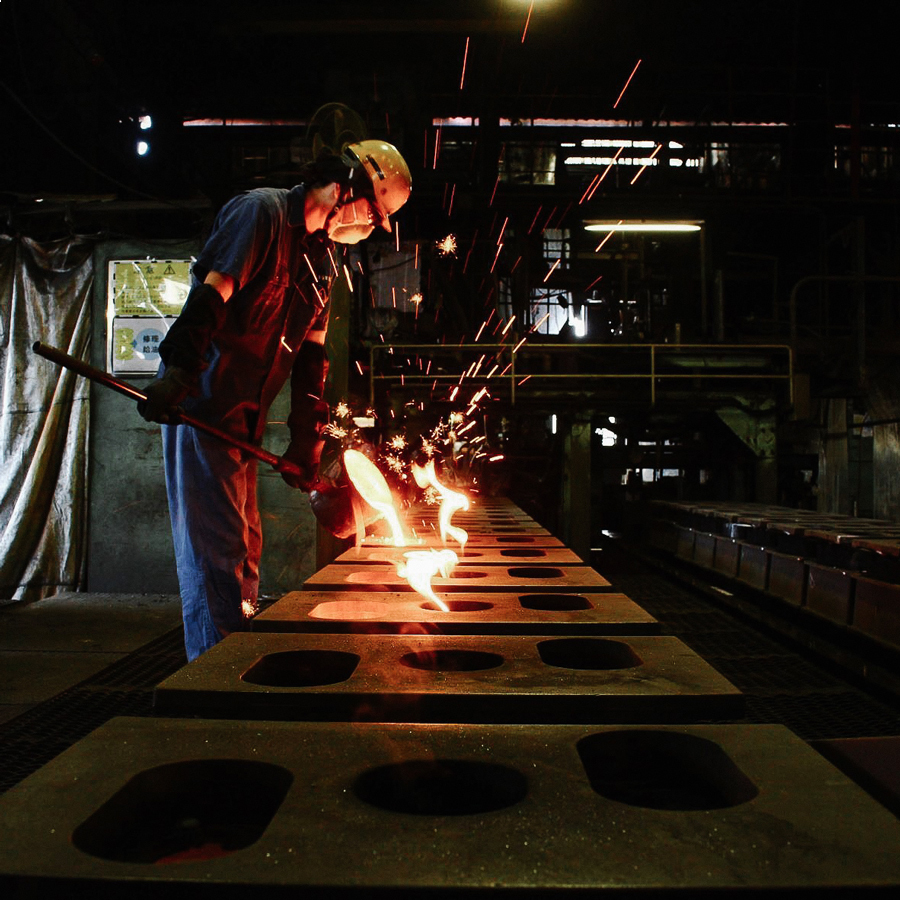Manufacture
This Tetsubin is cast in a sand mould that is meticulously decorated with stamped or freehand motifs before it is fired at a temperature of around 1000°C to form a solid mould into which 1500°C molten iron can then be poured. Once the iron has cooled and set, the Tetsubin is removed from the mould and is coated on the outside with a varnish made from cashew nuts to increase the durability of the iron. To prevent rust from developing the Tetsubin is baked again, this time at 900°C, to create an oxide film inside the kettle in a process known as Kamayaki (釜焼き "iron pot firing") which is unique to Nanbu Tekki.. Oigen are particularly proud of their natural finishing that allows plenty of iron to be released when boiling water.



